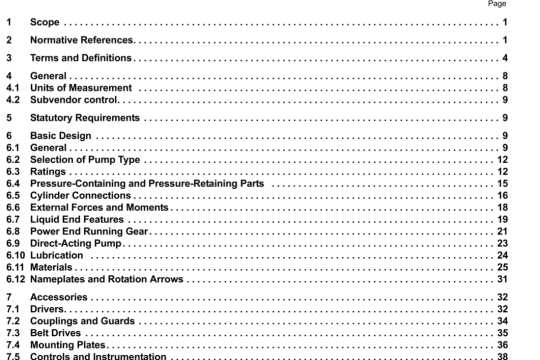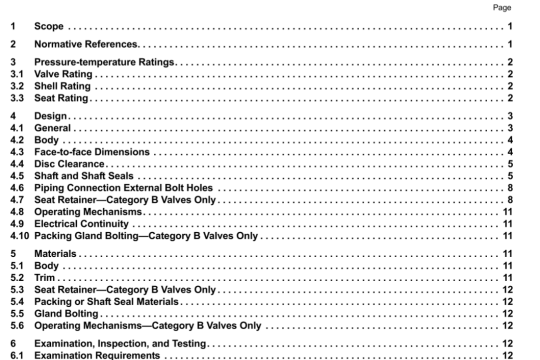API MPMS 12.1.1:2001(R2008) pdf download
API MPMS 12.1.1:2001(R2008) pdf download.Manual of Petroleum Measurement Standards Chapter 12—Calculation of Petroleum Quantities Section 1—Calculation of Static Petroleum Quantities Part 1—Upright Cylindrical Tanks and Marine vessels.
9.2.1 Total Observed Volume (TOy)
The TOV is obtained from the vessel’s capacity tables, which are entered with rne of the following:
a. The observed ullagc or innage, if the trim and/or list corrcctions arc a volumetric adjustment. The amount of trim and/or list correction will nccd to be applied to the TOVquanliLy to arrive at a trim and/or list corrcctcd TOV
b. The trim and/or list corrected ullage or innage.
c. The observed ullage or innage and the vessel’s trim. Some capacity tables show varying TOV values for the same gauge under differing conditions of trim.
9.2.2 Trim Correction
The trim correction is applied to conipensate for the change in liquid level due to the longitudinal plane of the vessel not being horizontal.
Subtract the forward draft reading from the after draft reading. If the trmni is positive (that is. the after draft reading is larger). the vessel is said to be ‘trirnmed by the stem.” If the trim is negative (that is, the forward draft reading is larger). the vessel is said to be ‘trirnmed by the head.” Note the following:
a. The trim correction is found in the vessel’s calibration tables and is usually a correction to the observed innage/ ullagc: however, it can be a volumetric adjustment to the TOy.
b. Trim corrections can be either positive or negative. The trim correction table will state how this correction is to be applied.
c. If trim corrections are not available, it may be possible to calculate this value. Refer to the equation and Figure 1.
Trim corrections are usually provided as pan of the vessel’s capacity tables and as such the following calculation is not normally carried out in the field: however, for those occasions where this may be required. the following formula can be used.
The trim correction is given by the following equation:
9.2.4 Combining Trim and List Corrections
Caution must be exercised when applying trim and list corrections collectively. In many cases these corrections arc only applicable when thc other condition does fbi exist. When both conditions do exist, ii is preferable (where possible) to eliminate one of them.
For information on the calculation procedure for combined trim and list corrections, refer to API MPMS Chapter 2.8A. Section 10.4.
9.2.5 Free Water Volume (FW)
FW volume is obtained from the vessel’s capacity tales. which arc entered with the FW innage or ullage. As with any liquid in a marine vessel’s tank. FW is subject to the effects of trim and list, and the previously referenced trim and list corrections are applicable to FW. provided that the FW is touching all bulkheads of the tank. if the FW does not touch all tank bulkheads, a wedge condition exists. The formula for calculating whether or not a wedge condition exists, the application of wedge tables/formulae, and the calculation of the wedge formula can be found in API MPMS Chapter 17.4.
10 Calculation of Gross Standard Volume (GSV) (Shore Tanks and Marine
Vessel’s Tanks)
10.1 GROSS STANDARD VOLUME (GSV)
The GSV is calculated by multiplying the GOV by the correction for the effect of temperature on liquid (or volume correction factor).
GSV = GOVxCTL
10.2 CORRECTION FOR THE EFFECT OF
TEMPERATURE ON A LIQUID (CTL) OR
VOLUME CORRECTION FACTOR (VCF)
If a volume ol petroleum liquid is subjected to a change in temperature, its density will decrease as the temperature rises or increase as the temperature falls. This density change is proportional to the thermal coefficient of expansion of the liquid and temperature. The correction factor for the effect of the temperature on the density of a liquid is called CTL or VCF. The CT!. factor is a function of the Base Density of the liquid and its temperature. The function of this correction factor is to adjust the volume of liquid at observed temperature to its volume at a standard temperature. The most common standard temperatures are 60°F. 15°C. and 20°C (68°F).




